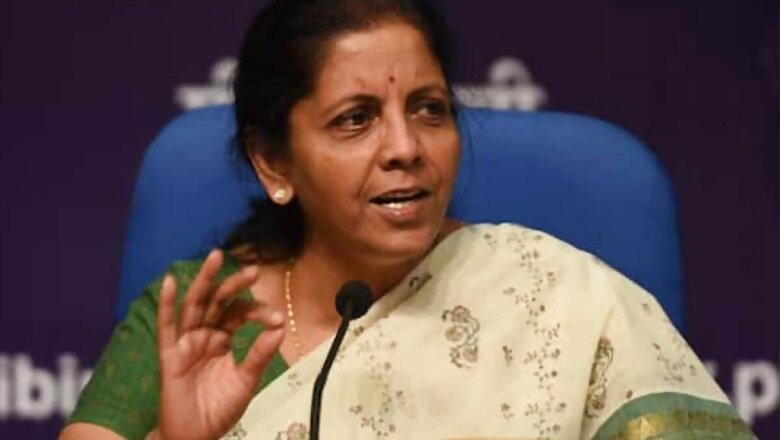
views
The Narendra Modi government’s decision to bring the Department of Public Enterprises (DPE) under the Finance Ministry from the Ministry of Heavy Industries & Public Enterprises is indicative of the desire to expedite and facilitate privatization. If the government succeeds in selling public sector undertakings (PSUs), also called public enterprises (PEs) and public sector enterprises (PSEs), it will be a big boost to the reforms.
Bringing the DPE under FinMin or Finance Ministry will help in the smooth transition of PSUs from state-run entities to private companies. A look at the DPE’s allocation of business rules will make us understand how. Some of these are: counseling, training, and rehabilitation of employees in PSEs under the voluntary retirement scheme; rendering advice related to revival, restructuring, or closure of PSEs, including the mechanisms thereof.
The move will complement the mandate of the Department of Investment & Asset Management (DIPAM), also under Finance Ministry. DIPAM is empowered to list PSEs on stock exchanges “to promote people’s ownership through public participation and improving efficiencies of CPSEs through accountability to its shareholders.”
Further, it is supposed to bring in operational efficiencies in PSEs through strategic investment, ensuring their greater contribution to economy. Also, it is entrusted to adopt a professional approach for financial management of PSEs.
ALSO READ | Towards Privatisation: This is a ‘Maruti Moment’ for the Modi Administration, Writes RC Bhargava
Shorn of officialese, it means that DIPAM will sell off PSEs, partially as well as fully. The very name DIPAM is clever newspeak, though salutary, not Orwellian. DIPAM, ostensibly about investment, is actually about disinvestment. Investment is disinvestment! DIPAM’s earlier name was honest: Department of Disinvestment. The government’s justification seems to be that a change of perspective makes investment disinvestment and vice-versa. When a private company puts in money in a PSU, it is investment as well as disinvestment, for government gets that money.
The Narendra Modi regime can be accused of indulging in newspeak but we must also remember that public discourse in India is carried out in a Leftist phraseology. Privatizers are vilified as the agents of immoral capitalists; and privatizing PSEs is dubbed ‘selling family silver to pay the grocer’s bill.’ No leader—certainly not Prime Minister Narendra Modi who has cultivated a pro-poor image—can afford to be seen as favouring corporate tycoons at the expense of the nation.
A Finance Ministry-controlled DPE, in conjunction with DIPAM, will not just expedite the sale of state-run companies but also iron out post-privatization complications.
The life and times of DPE mirror the history of the public sector—and the government’s changing attitude towards it—since the early 1960s. The Estimates Committee of 3rd Lok Sabha (1962-67) had “stressed the need for setting up a centralized coordinating unit, which could also make continuous appraisal of the performance of public enterprises,” the DPE website says.
This led to the setting up of the Bureau of Public Enterprises (BPE) in 1965 in the Ministry of Finance. Subsequently, as a result of the reorganization of the ministries and departments of the Union government in September 1985, the BPE was made part of the Ministry of Industry. In May 1990, BPE was upgraded, made a full-fledged department known as the Department of Public Enterprises (DPE). So, the government’s recent move completes its circle of life; it is back with the Ministry of Finance.
The DPE was moved to the Ministry of Industry because PSUs were seen as the engines of industrialization and prime movers of economic development. That was then, when socialism was supposed to usher in heaven on earth—social control over the means of production, phasing out of capitalists, no ‘profiteering,’ no filthy rich fattening at the expense of the poor, no inequalities, and so on.
The reality of socialism, however, was in stark contrast with its romance. In practice, it meant tight political control and stifling bureaucratization with all the attendant evils. The results are for all to see. The returns on investment fell much short of the expectations. PSUs enjoyed all kinds of support from the government, including hidden subsidies, yet few of them could face competition from the private sector. Most of the profits they earn are in the areas where they enjoy monopoly or market dominance, like oil and power. There are even sectors, like telecom, where their dominance has all but ended, with BSNL and MTNL surviving on the taxpayer’s largesse.
Worse, PSUs’ profits are declining. “The overall net profit of the CPSEs declined by 34.6 per cent to reach Rs 93,295 crore in FY20 from Rs 1.43 lakh crore in FY19,” said the Economic Survey for last year.
The tale of PSU woes is unending. Fewer than half of 366 PSUs—171 to be exact—booked profit in 2019-20. In fact, 110 are not even operational. Over the decades, government documents have pointed out that various revival packages, running into lakhs of crore, have failed to resuscitate sick PSUs.
This is the reason that the government, after years of incremental change and dithering, finally decided this year to sell off PSUs. In her Budget speech, Finance Minister Nirmala Sitaraman said, “The government has approved the PSU policy. The policy provides a clear roadmap for disinvestment in all non-strategic and strategic sectors. We have kept four areas that are strategic where bare minimum CPSEs will be maintained and rest privatized. In the remaining sectors, all CPSEs will be privatized.”
Bringing the DPE under her ministry will hopefully help the government sell off PSUs. This will also help the taxpayer, who has to ultimately bear the cost of running PSUs.
Read all the Latest News, Breaking News and Coronavirus News here.


















Comments
0 comment